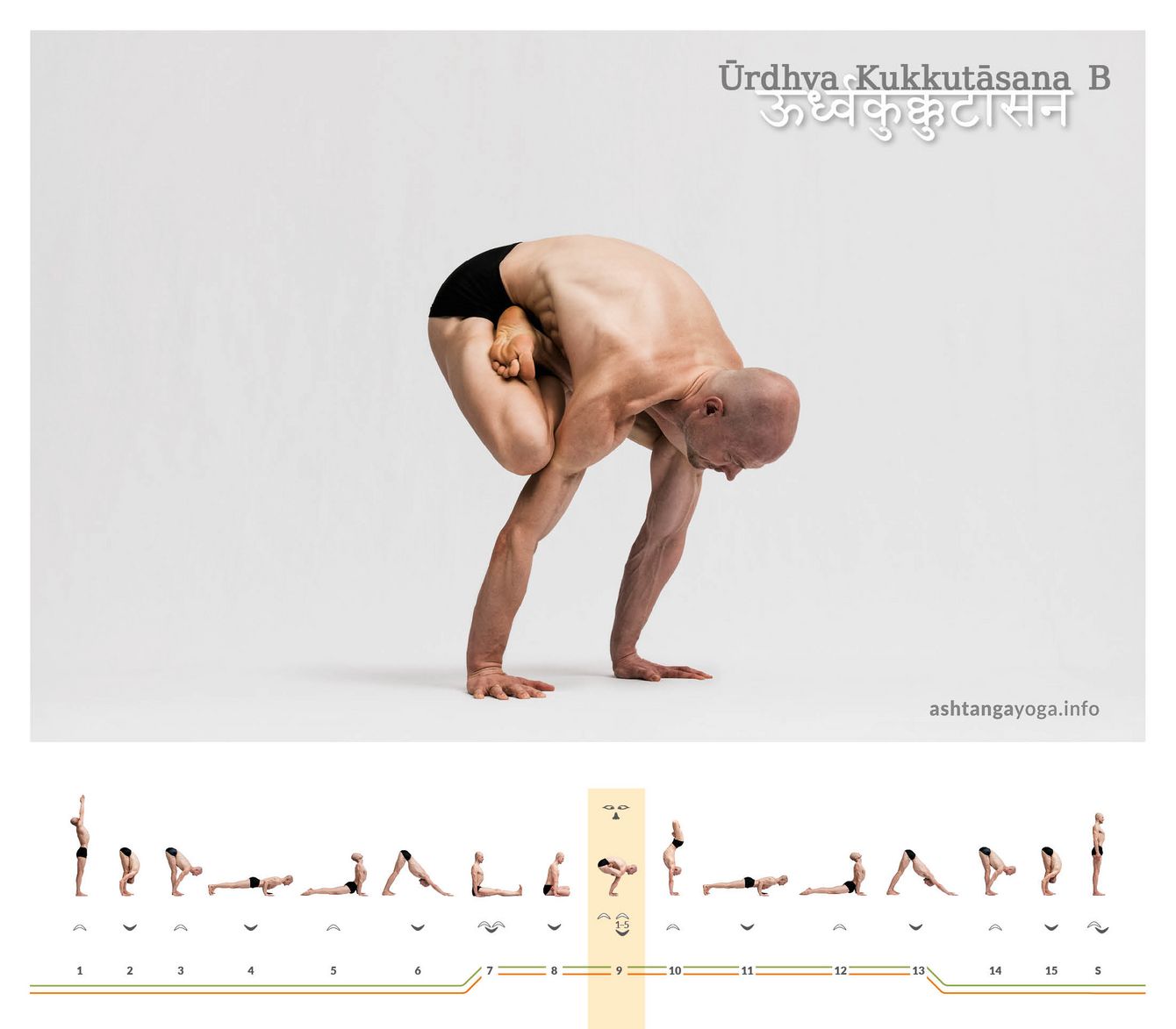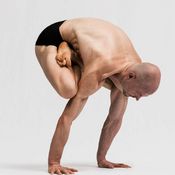

Symbolism: The pose Ūrdhva Kukkuṭāsana B symbolizes the pursuit of elevation and spiritual growth. The term 'Ūrdhva' figuratively expresses the soul's aspiration to ascend. Ūrdhva Kukkuṭāsana B is a movement that goes beyond the ordinary and thus aims for transcendence. This pose is a tribute to the deeply rooted human quest to rise above our earthly bonds and to establish a connection with the divine.
The component 'Kukkuṭa', or the rooster, symbolically stands for awakening. Just as the rooster announces the new day, Ūrdhva Kukkuṭāsana B encourages practitioners to face the challenge of spiritual awakening. This moment of awakening is depicted in many myths as the beginning of a journey that leads the soul from darkness to light.
In Indian mythology, the motive of elevation and awakening is found in numerous stories where gods and saints align their consciousness to higher states. Thus, Ūrdhva Kukkuṭāsana B embodies not only a physical challenge but also a metaphorical journey of the spirit deeply rooted in mythology.
In the traditional count: Begin directly from "Downward-Facing Dog" pose in the previous sequence.
Vinyāsa 7 - Inhale, Exhale, Inhale
Leap inhaling from "Downward-Facing Dog" into arm balance. Lower yourself with an exhale to a seated position. Extend your legs for Daṇḍāsana and inhale once again.
Vinyāsa 8 – Exhale:
With an exhale, fold your right leg and then your left into the Lotus position.
Vinyāsa 9 - Exhale
Inhale and lift into Utplutiḥ. Pull your knees tightly together and your pelvis back and up. Once your knees are through behind your arms, rest your shins on your upper arms. Stabilize the pose by pressing your shins against your armpits. Remain here until the fifth exhalation.
Tip: In order to pull the legs back and through more easily, start by lifting your knees as high as possible. Then tilt your shoulders forward with straight arms. The higher your knees come through between your arms, the easier you can roll your pelvis back and up. As you do this, push your shoulder blades forcefully forward and round your back.
Vinyāsa 10 - Inhale:
Inhale, lift your legs folded into the Lotus position to transition into an arm balance.
Vinyāsa 11 to 13:
Follow the movement flow you are already familiar with until you come to a halt in "Downward-Facing Dog."
In the traditional count: Proceed directly into the movement flow of the next posture.
Effect: Ūrdhva Kukkuṭāsana enhances hip flexibility. Furthermore, the pose strengthens the abdominal and core muscles. It trains the ability for deep concentration, but also promotes physical and, metaphorically, emotional balance.
Fotograf: Richard Pilnick - www.richardpilnick.com


 Dr. Ronald Steiner
Dr. Ronald Steiner
Messages and ratings